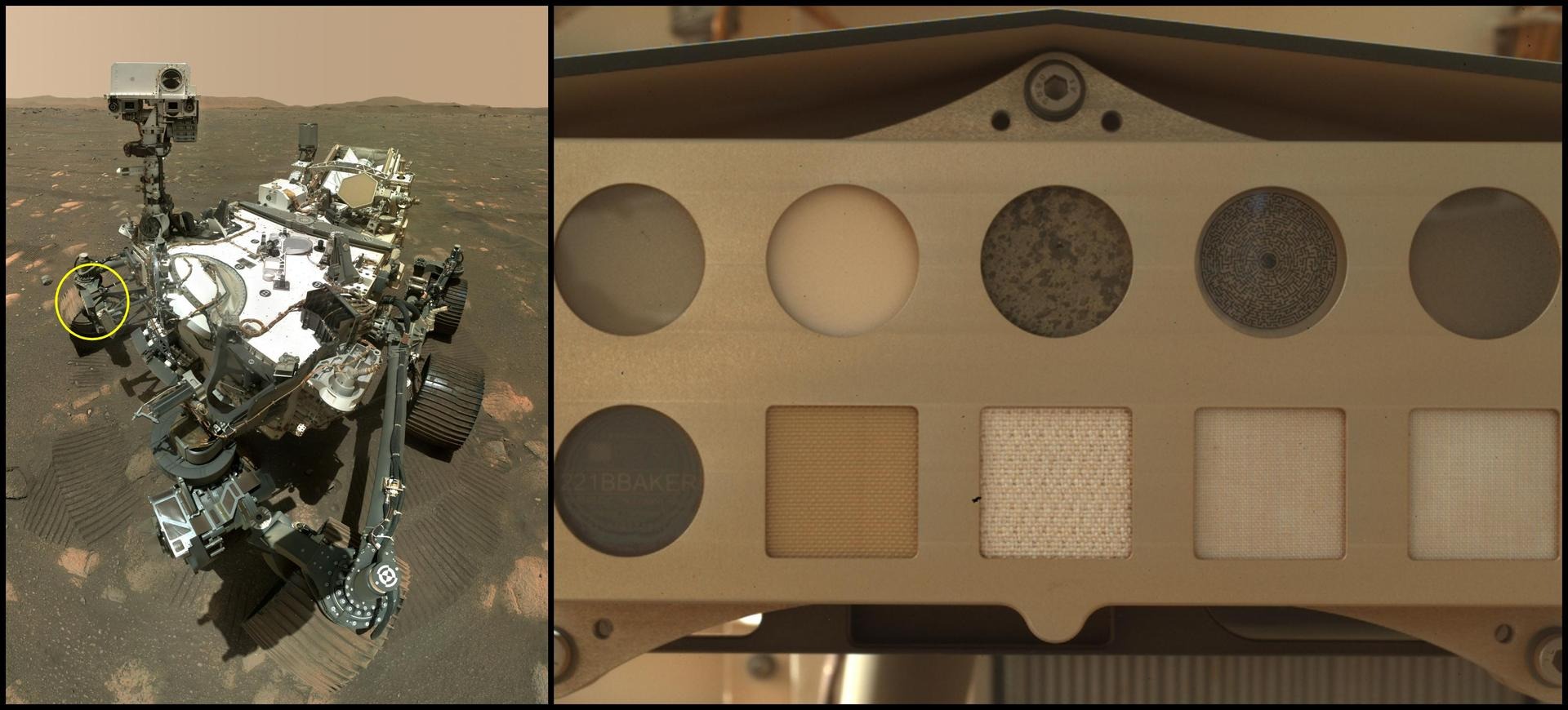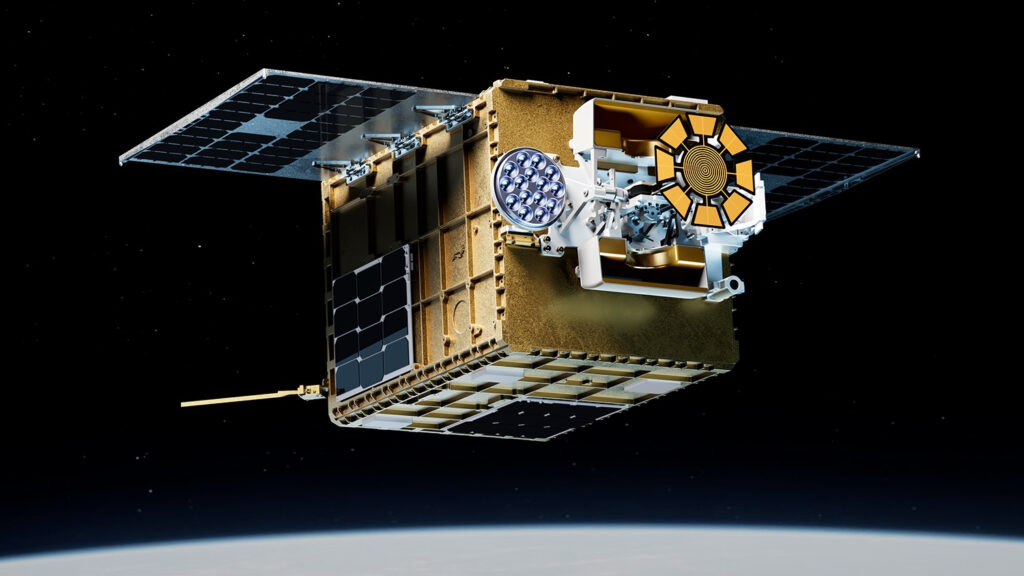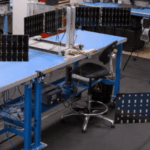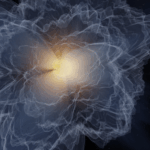Now Reading: Why does NASA’s Perseverance rover keep taking pictures of this maze on Mars?
-
01
Why does NASA’s Perseverance rover keep taking pictures of this maze on Mars?
Why does NASA’s Perseverance rover keep taking pictures of this maze on Mars?

If you’ve spent any time perusing the carousel of raw images from NASA’s Perseverance Mars rover, you might have stumbled across an odd subject: a tiny, intricate maze etched into a small plate, photographed over and over again.
Why is the Perseverance rover so obsessed with this little labyrinth? It turns out the maze is a calibration target — one of 10 for Perseverance’s Scanning Habitable Environments with Raman & Luminescence for Organics and Chemicals instrument, otherwise known for its fun acronym, SHERLOC.
This Sherlock Holmes–inspired tool is designed to detect organic compounds and other minerals on Mars that could indicate signs of ancient microbial life. To do that accurately, the system must be carefully calibrated, and that’s where the maze comes in.
Located on the rover’s seven-foot (2.1-meter) robotic arm, SHERLOC uses spectroscopic techniques — specifically Raman and fluorescence spectroscopy — to analyze Martian rocks. In order to ensure accurate measurements, it must routinely calibrate its tools using a set of reference materials with specific properties. These are mounted on a plate attached to the front of the rover’s body: the SHERLOC Calibration Target.
“The calibration targets serve multiple purposes, which primarily include refining the SHERLOC wavelength calibration, calibrating the SHERLOC laser scanner mirror, and monitoring the focus and state of health of the laser,” Kyle Uckert, deputy principal investigator for SHERLOC at NASA’s Jet Propulsion Laboratory, tells Space.com
The target is arranged in two rows, each populated with small patches of carefully selected materials.
The top row includes three critical calibration materials: aluminum gallium nitride (AlGaN) on sapphire discs; the UV-scattering material Diffusil; and Martian meteorite SaU008, whose mineral makeup is already known and helps align wavelength calibration with real Martian geology.

This is also where you’ll find the maze. Why a maze? “SHERLOC is all about solving puzzles, and what better puzzle than a maze!” says Uckert. The purpose of the maze target is to calibrate the positioning of the laser scanner mirror and characterize the laser’s focus, which requires a target with sharply contrasting spectral responses. The maze serves this purpose well.”
The maze is made of chrome-plated lines just 200 microns thick (about twice the width of a human hair) printed onto silica glass. “There are no repeating patterns and the spectrum of the chrome plating is distinct from the underlying silica glass,” says Uckert. That makes it possible to measure the laser’s focus and accuracy with extreme precision.
If you look closely at the maze, you’ll also notice a Sherlock Holmes portrait right at the center. While it’s a cheeky nod to the instrument’s name, it serves a practical function. “SHERLOC spectral maps can resolve the 200 micron thick chrome plated lines and the 50 micron thick silhouette of Sherlock Holmes at the center of the maze,” Uckert notes.
Like the portrait, the bottom half of the SHERLOC Calibration Target also serves a dual purpose: spectral instrument calibration and spacesuit material testing. It contains five samples of materials used in modern spacesuits, including some materials you might be familiar with, like Teflon, Gore-Tex, and Kevlar. And don’t miss the “fun” target in this row — there’s a geocache marker backing a polycarbonate target, and it does indeed have a tie-in to Sherlock Holmes.

RELATED STORIES:
These materials are actively being tested under Mars conditions to determine how they hold up over time in situ, which is crucial for planning human exploration of the Red Planet. “Note that we use all of these materials to fine-tune SHERLOC,” adds Uckert. “As a bonus, the spacesuit materials support unique science that will help keep future astronauts safe.”
Now, if all these Sherlock Holmes–related Easter eggs on the SHERLOC Calibration Target aren’t enough for you, there’s one final link. SHERLOC has a color camera as part of its instrumentation suite that sometimes images the target, and it’s called the Wide Angle Topographic Sensor for Operations and eNgineering.
Yes, SHERLOC’s sidekick is called WATSON.
Stay Informed With the Latest & Most Important News
Previous Post
Next Post
-
 012024 in Review: Highlights from NASA in Silicon Valley
012024 in Review: Highlights from NASA in Silicon Valley -
 02Panasonic Leica Summilux DG 15mm f/1.7 ASPH review
02Panasonic Leica Summilux DG 15mm f/1.7 ASPH review -
 03From Polymerization-Enabled Folding and Assembly to Chemical Evolution: Key Processes for Emergence of Functional Polymers in the Origin of Life
03From Polymerization-Enabled Folding and Assembly to Chemical Evolution: Key Processes for Emergence of Functional Polymers in the Origin of Life -
 04How New NASA, India Earth Satellite NISAR Will See Earth
04How New NASA, India Earth Satellite NISAR Will See Earth -
 05And Thus Begins A New Year For Life On Earth
05And Thus Begins A New Year For Life On Earth -
 06Astronomy Activation Ambassadors: A New Era
06Astronomy Activation Ambassadors: A New Era -
07SpaceX launch surge helps set new global launch record in 2024




















